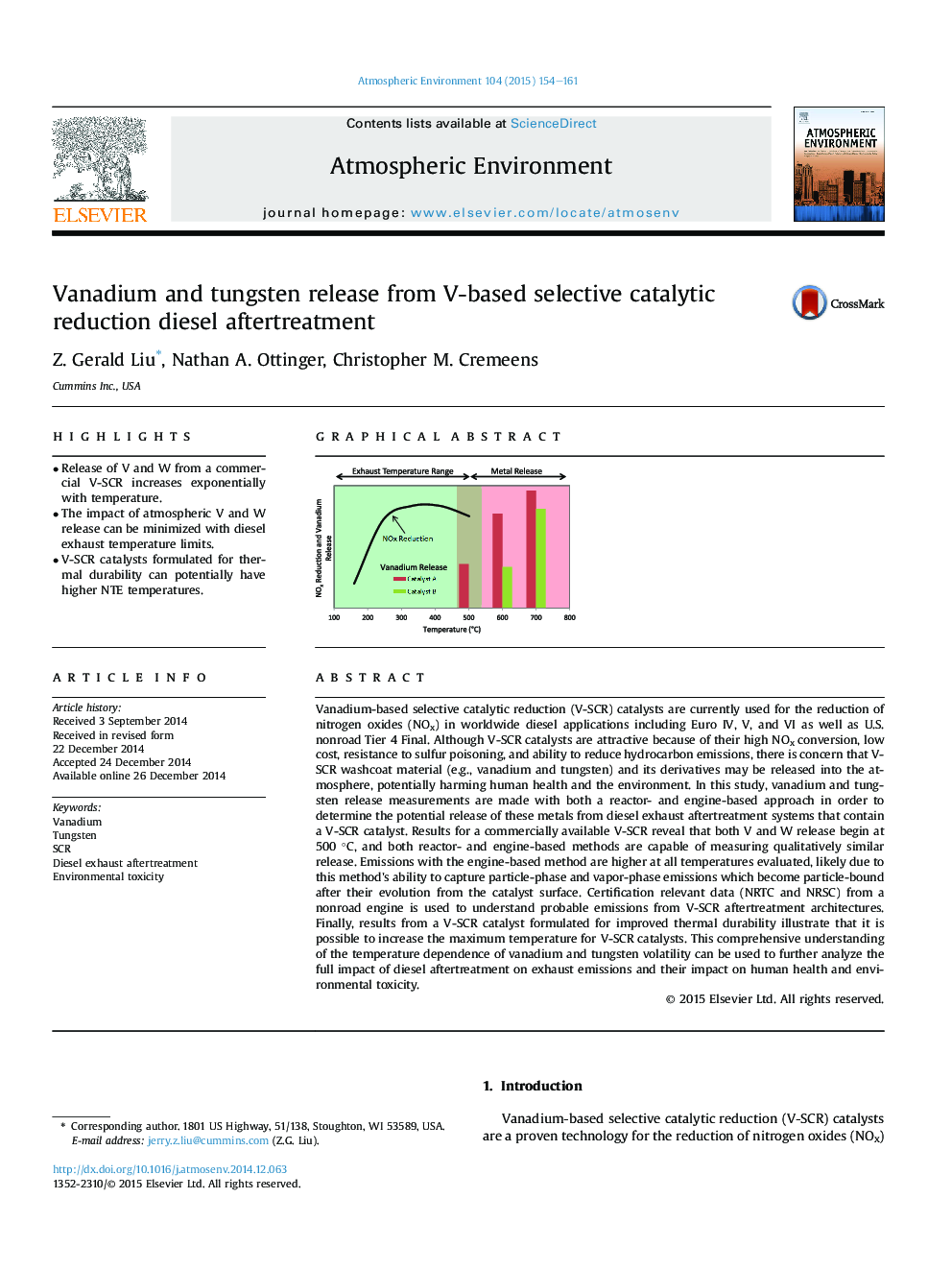| کد مقاله | کد نشریه | سال انتشار | مقاله انگلیسی | نسخه تمام متن |
|---|---|---|---|---|
| 6338781 | 1620367 | 2015 | 8 صفحه PDF | دانلود رایگان |

- Release of V and W from a commercial V-SCR increases exponentially with temperature.
- The impact of atmospheric V and W release can be minimized with diesel exhaust temperature limits.
- V-SCR catalysts formulated for thermal durability can potentially have higher NTE temperatures.
Vanadium-based selective catalytic reduction (V-SCR) catalysts are currently used for the reduction of nitrogen oxides (NOx) in worldwide diesel applications including Euro IV, V, and VI as well as U.S. nonroad Tier 4 Final. Although V-SCR catalysts are attractive because of their high NOx conversion, low cost, resistance to sulfur poisoning, and ability to reduce hydrocarbon emissions, there is concern that V-SCR washcoat material (e.g., vanadium and tungsten) and its derivatives may be released into the atmosphere, potentially harming human health and the environment. In this study, vanadium and tungsten release measurements are made with both a reactor- and engine-based approach in order to determine the potential release of these metals from diesel exhaust aftertreatment systems that contain a V-SCR catalyst. Results for a commercially available V-SCR reveal that both V and W release begin at 500 °C, and both reactor- and engine-based methods are capable of measuring qualitatively similar release. Emissions with the engine-based method are higher at all temperatures evaluated, likely due to this method's ability to capture particle-phase and vapor-phase emissions which become particle-bound after their evolution from the catalyst surface. Certification relevant data (NRTC and NRSC) from a nonroad engine is used to understand probable emissions from V-SCR aftertreatment architectures. Finally, results from a V-SCR catalyst formulated for improved thermal durability illustrate that it is possible to increase the maximum temperature for V-SCR catalysts. This comprehensive understanding of the temperature dependence of vanadium and tungsten volatility can be used to further analyze the full impact of diesel aftertreatment on exhaust emissions and their impact on human health and environmental toxicity.
142
Journal: Atmospheric Environment - Volume 104, March 2015, Pages 154-161